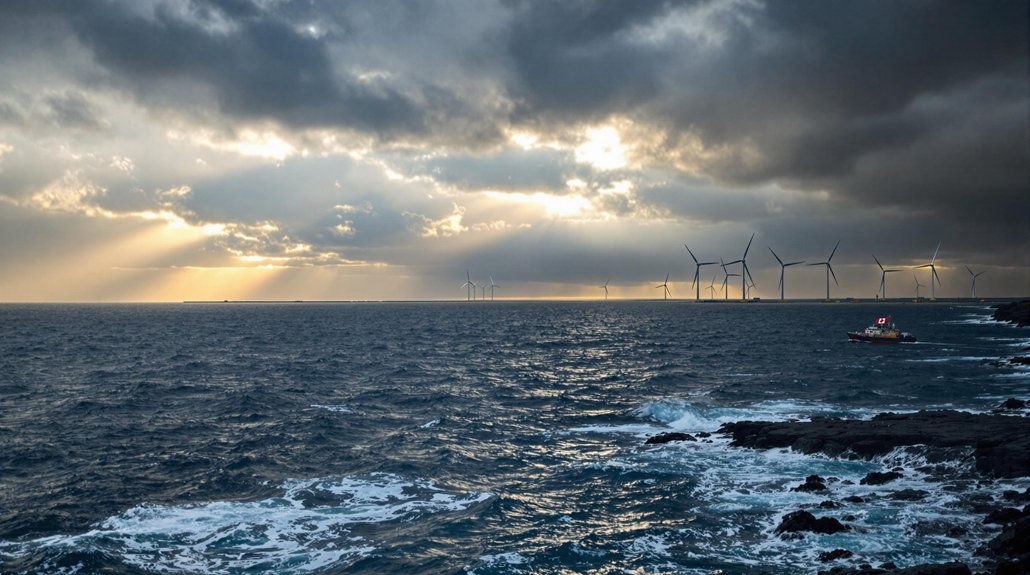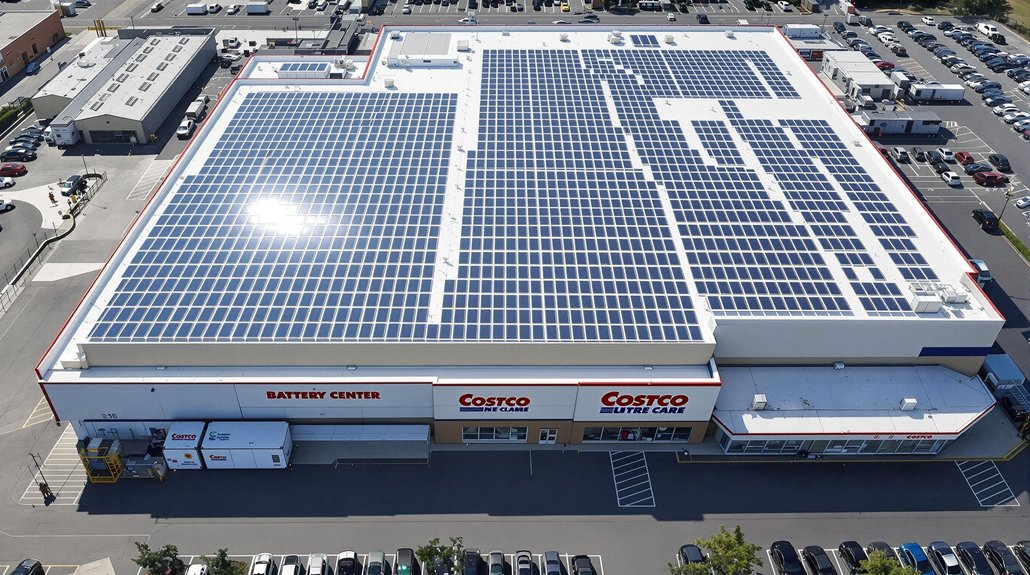Canada’s betting big on offshore wind while America dithers. Zero turbines today, but ambitious plans for 5,000 megawatts by 2030 in Nova Scotia alone. Legislative groundwork? Done. Industry expertise from oil and gas? Check. The potential is massive—Sable Island Bank could power 6.5 million homes. Sure, challenges exist: infrastructure gaps, environmental concerns. But Canada’s methodical approach might just snatch the crown before the US even puts on its boots.
A race without a winner—yet. While offshore wind turbines populate European waters and China cranks them out like nobody’s business, North America remains stubbornly behind. Canada has zero operational offshore wind farms. Zero. But that might be changing.
Canada’s diving headfirst into offshore wind while their southern neighbor dithers. They’ve got the legislation—Bill C-49 amended the Accord Acts, paving the way for turbines in Canadian waters. They’ve got the roadmaps—Nova Scotia plans to lease areas for 5,000 megawatts by 2030. They’ve even joined the Global Offshore Wind Alliance this February. America? Still figuring out the paperwork.
While America dithers, Canada’s setting the stage for offshore wind dominance with legislation, roadmaps, and global partnerships already in place.
The economics are staggering. Nova East Wind project alone will cost $2 billion. But with the global offshore market valued at $1 trillion, it’s pocket change for potential returns. Plus, Canada’s not starting from scratch. They’ve already installed 16,900 MW of onshore wind capacity by 2023, generating 5.8% of their electricity. Canada currently produces 36.06 TWh from wind energy, accounting for 6.6% of the country’s electricity consumption. Not too shabby.
Three regions stand ready for development: Atlantic Canada, the Pacific coast, and the Great Lakes. Nova Scotia and Newfoundland are leading the charge, naturally. They’ve been oil and gas players for decades. Why not repurpose that expertise? The Sable Island Bank alone could support enough turbines to power 6.5 million Canadian homes with clean electricity. If developed properly, these regions could tap into the incredible potential of offshore wind capacity that could generate 18 times current global electricity needs.
Challenges? Oh, plenty. No infrastructure. Fierce global competition. Marine ecosystem concerns. But Canada’s approach seems smarter than just throwing turbines into the ocean. They’re conducting regional environmental assessments. Setting safety regulations. Involving Indigenous communities—like that MOU with Mi’kmaq Chiefs for Nova East.
The clock’s ticking. GOWA wants 380 gigawatts globally by 2030. That’s a lot of turbines. Canada’s wind market could reach 1.61 billion kilowatt-hours by 2025.
Will Canada grab the North American offshore wind crown while America sleeps? Maybe. First bid call in Nova Scotia comes next year. After that, it’s anyone’s game. But at least Canada’s shown up to play.








